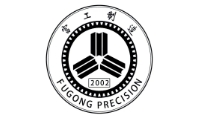
How does ultra-precision machining equipment achieve high-precision machining of micron-level features in precision injection mold cores?
Publish Time: 2025-08-05
In the halls of precision in modern manufacturing, precision injection mold cores serve as a bridge between design and production, carrying the heavy responsibility of transforming complex 3D models into actual products. Especially in fields such as automotive, medical, and electronics, where precision is paramount, they are more than just a simple tool; they represent a culmination of precision engineering that integrates materials science, thermodynamics, fluid dynamics, and manufacturing processes. From explosion-proof safety components in battery manufacturing to electronic structural components, every micron-level detail determines the performance and reliability of the final product. With its unparalleled high precision, consistency, and stability, precision injection mold cores are the unsung heroes of innovation and progress in these industries.The superiority of precision injection mold cores is primarily reflected in their unwavering pursuit of extreme precision. In the automotive industry, the safety of battery components is paramount, especially explosion-proof safety components, which require high consistency and reliability under extreme conditions. This demands that mold cores possess extremely high dimensional accuracy and surface finish to ensure that every injection molded product meets design standards. For example, when producing electronic parts with internal thread pitch errors of ≤0.001mm, mold cores must not only accurately reproduce complex geometries but also ensure uniform distribution and high-precision matching of the internal threads. This conventional "millimeter-level tolerance" operation is elevated to a new level of "micrometer-level control." By utilizing ultra-precision machining equipment (such as five-axis CNC machines and wire-cut EDM machines) and advanced measurement technologies (such as coordinate measuring machines), mold cores can achieve submicron-level feature reproduction, ensuring every detail is under design control.The core value lies in the in-depth exploration of multi-physics collaborative optimization and intelligent integration. Modern precision injection mold cores are more than just "steel block engraving"; they integrate systematic engineering techniques such as fluid dynamics (such as mold flow analysis), heat transfer analysis (cooling efficiency optimization), and structural mechanics (stress simulation). During the design phase, mold flow analysis using CAE software can predict defects (such as sink marks, warpage, and air pockets) during melt filling, pressure holding, and cooling, allowing for pre-optimization of gate location, cooling channel layout, and process parameters, significantly shortening mold trial cycles. The design of the cooling system within the mold core is crucial. A well-designed cooling channel layout not only improves production efficiency but also effectively reduces product deformation and increases yield. Cutting-edge designs even integrate temperature and pressure sensors, enabling real-time monitoring and closed-loop control of the production process, moving toward "smart molds."Precision injection mold cores demonstrate profound support for accelerating innovation and small-batch customization. For product designers, high-precision mold cores offer greater design freedom—enabling complex curves, intricate textures, thin-wall structures, insert molding, and other challenging features, pushing the boundaries of product aesthetics and functionality. In fields such as medical, optical, and microelectronics, precision mold cores are a key technology for miniaturization and integration. Advances in rapid tooling technologies (such as 3D printing and soft mold technology) have made small-batch, high-variety customized production possible, meeting market demand for personalization and agile response, and driving the manufacturing industry's transformation toward flexibility and service-oriented manufacturing.The deeper significance of these technologies lies in their critical role as a key enabler of industrial upgrading and global competitiveness. Battery casings and lightweight body parts for new energy vehicles, high-frequency connectors for 5G communications equipment, and heat dissipation structures for artificial intelligence hardware—all these core components of emerging industries require groundbreaking mold technology. The accuracy, lifespan, and efficiency of precision injection mold cores directly determine the mass production feasibility and cost-competitiveness of new technologies. A country or region's level of precision mold manufacturing is often considered a key indicator of its high-end manufacturing capabilities. Amidst fierce international competition, companies that master advanced mold core manufacturing technologies can gain a more advantageous position in the supply chain and capture greater market share.Though crafted from steel, precision injection mold cores embody an unwavering pursuit of perfect form. They define product boundaries with micron-level precision, employ complex internal systems to control the molding process, and sacrifice lengthy development cycles for production certainty. In an era of extreme perfection, rapid iteration, and intelligent manufacturing, they are silently yet resolutely becoming the most solid foundation behind all industrial miracles, making every molding process a precise challenge to the "impossible."

